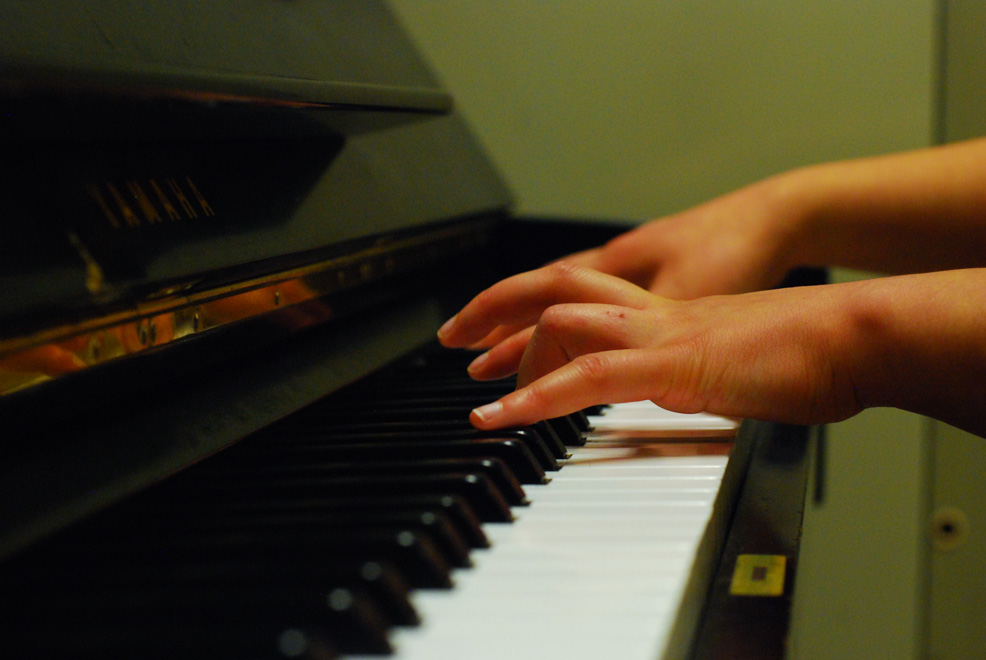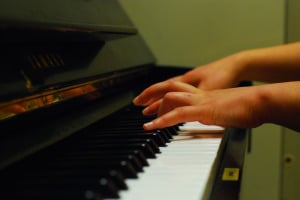
Although in recent years Stanford has attempted to increase its visibility in the arts by erecting several new state-of-the-art buildings for the arts, including Bing Concert Hall and the Anderson Collection, resources are still lacking at the student level, from the limited storage space in the Visual Arts Department to the scarcity of practice space for student dance groups. The Department of Music can now count itself on this list of grievances, too: both music majors and non-music majors have been criticizing the substandard quality and the low availability of the practice room pianos in Braun, as well as the high cost of gaining access to them.
Broken strings, out-of-tune notes and sticky keys — these are just a few of the ailments that plague the practice room pianos on the second floor of the Braun Music Center. Additionally, the disparity between pianos in public spaces such as dorms — which are often superior — and those in practice rooms, presents a tricky dilemma to those who value privacy but also wish to practice on good instruments.
Students have been long aware of the shortcomings of the pianos in the music department. “The practice room pianos at Braun are just not up to par at all,” said Kevin Coelho ’17, noting inconsistency in key-action on a single keyboard as a significant problem. Adjusting to uneven keys can impact a pianist’s performance of a particular piece and, in the long-run, can affect technique. Sticky keys or slow hammer action — which are also common — exacerbate the difficulties. “When you have that, it’s really hard to have good practice sessions,” said NiuNiu Teo ’16 in a phone interview.
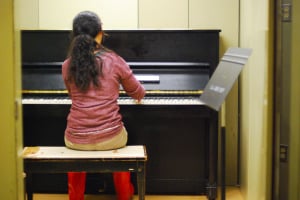
Jason Griffin ’17 points out that while the practice rooms may not have the best pianos, there are other places in the Department of Music — classrooms and rehearsal spaces — with finer pianos that are open when not in use. However, reserving these instruments can be difficult and unpredictable. “Overall,” said Stephanie Wang ’15, “the quality and quantity of practice rooms are pretty low.”
Peter Sumner, curator of pianos at Stanford, is responsible for taking care of the pianos at Braun and concert halls such as Campbell and Bing. While he and his colleague John Howard do their best, as part-time piano technicians, to improve the condition of the pianos, Sumner realizes that their reach is limited. “We are constantly trying to upgrade them, but that’s basically one full-time technician to do all the work to see the 70 pianos that we have — not just the tuning but also the restoration and the ongoing maintenance.”
For the older pianos, it’s simply a matter of keeping them going. “There are some instruments that are well past their sell-by date,” Sumner said. “You’re dealing with 40-year-old Yamaha uprights and almost hundred-year-old Steinway grand pianos, some of which are from the ’20s and ’30s. We just don’t have parts or funding to replace them.”
Indeed, the underlying problem appears to be a lack of resources in the Department of Music, which Sumner describes as “very underfunded.” His dream, he says, would be “to have the Department of Music thought of by somebody in the same way someone thought of USC.” In 1999, philanthropist Flora L. Thornton donated $25 million to the School of Music at the University of Southern California, which was then renamed in her honor. Thornton gave another $5 million for the school’s facility needs in 2006. Today, USC boasts one of the top music programs in the country, hosting the likes of Pepe Romero and Midori.
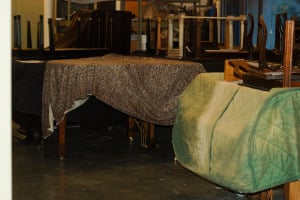
Inspired by this, Sumner has been entertaining the idea of having wealthy individuals sponsor a particular instrument for restoration. An aging Steinway grand, for example, could be sent back to the Steinway factory in New York to be remanufactured for approximately half the price of a new piano. Sumner quotes the cost at around $60,000 to $75,000, which he acknowledges is a sizeable amount for most donors. “It hasn’t happened here yet,” he said, “But I’m hopeful.”
Students, too, have noticed this limited funding resulting in limited resources. “I think there’s a distinct lack of funding in the music department,” said one student. “Wherever the money is, it’s not being used to improve practice spaces on campus.”
Some students, discouraged by the state of the pianos in the Department of Music, have opted to practice in their dorms where the pianos are sometimes much better. Coelho recounts his experience practicing on a dorm piano as a freshman, citing convenience as a significant benefit. “It was super nice, because I could just sit down and practice, as long as it wasn’t being used,” he said. Griffin expressed similar sentiments, often preferring to play on one of the grand pianos in Kimball rather than “going all the way to Braun, unlocking a room, and sitting in one of those stuffy boxes to practice.”
Both noted, however, that there are tradeoffs. Practicing in a dorm can be distracting, especially with residents around. “People walk by; people make noise,” Coelho explained. “You have to just deal with it and practice through it.” But for many, simply “practicing through it” is easier said than done. “I never really felt comfortable,” admitted Teo, who attempted practice sessions in her dorm freshman year. For Griffin, a sophomore studying composition, privacy is especially valuable; like most artists, composers are hesitant to show the world their creative process.
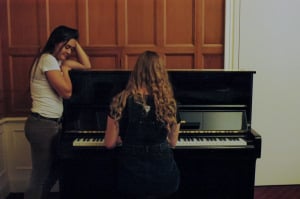
This places musicians — pianists in particular — in a touchy situation. While they treasure seclusion, the best pianos are often found in public places, forcing them to choose between quality and privacy. For instance, the lounge in Kimball, an arts-themed dorm, houses two grand pianos that one student described as “significantly better” than most pianos in Braun. Branner is also known to have an excellent grand piano.
While the presence of these instruments in the dorms increases the accessibility of music resources for students, it also decreases the pianos’ availability for serious musicians. “It’s surprising that the music building has some of the worst pianos on campus,” Coelho said. This disparity has affected the morale of students, one of whom described the situation as “disheartening.” “It makes me feel like the school doesn’t care about music,” said another.
Besides the inferior quality of the instruments, practicing at Braun isn’t free, either. Students must pay $50 for each quarter they choose to rent practice rooms, although it is included in the $600 per quarter fee for those taking music lessons. Without lessons, the cost of practicing in Braun can add up to $150 per year, not including the summer quarter. Studying music privately at Stanford costs even more: up to $1800 per year — an amount some students have labeled “absurd.”
“We’re already paying so much for being here,” one student said.
Like many things, it all seems to come down to cost. Despite Stanford’s $21.4 billion endowment — 75 percent of which is already reserved by donors for particular purposes — the arts departments, particularly music, have often been overlooked in favor of the sciences. Part of this is because there are fewer sponsors for the arts, which means less funding — the Department of Music, Sumner says, “is just not sexy.”
Not sexy perhaps, but still important. Though most students who study music at Stanford end up majoring in other fields, many cite music as both a creative outlet and an asylum from the demanding pressure of academics. “It’s a great solace for folks who are studying hard,” Sumner says. Wang, a biology major who has been studying piano since she was five, agrees: “It’s nice for me to able to relax and de-stress by practicing.”
That’s not to say that studying music is easy at Stanford. Cost is high, good pianos are scarce and resources are limited, not to mention the rigorous academic expectations that come along with attending one of the most elite liberal arts institutions in the country. Stanford is not, after all, a conservatory. But then again, neither is USC. Despite the buzz surrounding monumental construction projects and generous donations, Stanford still has a long way to go when it comes to supporting the arts at the student level. For the Department of Music, that will mean hiring more technicians, expanding facilities and improving practice room availability. For Sumner it’s quite simple: “It’s just a question of more money.”
Contact Marisa Lin at mlin3 ‘at’ stanford.edu.
